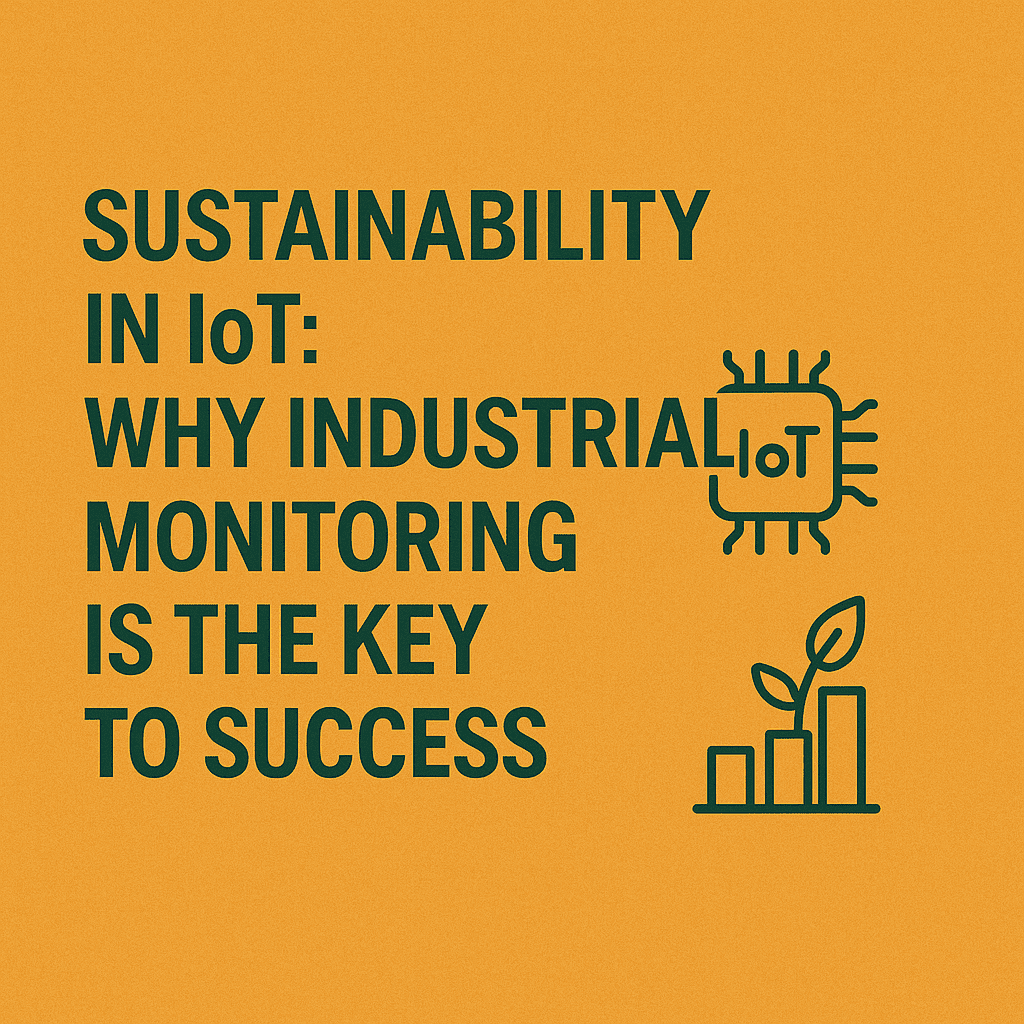In an era where environmental responsibility is no longer optional but essential, sustainability has become a core priority for industries worldwide. At the heart of this shift is At the heart of this shift is the Internet of Things (IoT) — a network of connected devices and sensors that is revolutionizing how industries monitor, manage, and optimize their operations. Among all IoT applications, industrial monitoring stands out as the key driver for achieving sustainability goals while boosting efficiency and competitiveness.
The Sustainability Challenge in Industry
Industries are among the largest consumers of energy, water, and raw materials. They are also significant contributors to carbon emissions and environmental degradation.
Traditional industrial practices often suffer from:
- Lack of visibility into resource usage and emissions
- Slow reaction times to system failures or inefficiencies
- Manual data collection,prone to human error
- Difficulty in meeting stricter environmental regulations
Without accurate, real-time insights, it becomes almost impossible for companies to manage resources efficiently or comply with increasingly stringent sustainability standards.
How IoT-Based Industrial Monitoring Drives Sustainability
IoT technologies transform industrial sustainability by enabling:
- Real-time Data Collection: Connected sensors continuously monitor parameters like energy consumption, temperature, emissions, and water usage, providing instant feedback.
- Predictive Maintenance: IoT systems detect anomalies before equipment failures occur, reducing downtime and extending machine lifespans.
- Energy and Resource Optimization: Dynamic control systems adjust operations based on real-time demand, avoiding waste.
- Regulatory Compliance: Automatic reporting tools ensure accurate data for audits and sustainability certifications.
- Carbon Footprint Reduction: Better tracking of emissions allows for targeted actions to minimize environmental impact.
By making processes smarter and more responsive, IoT not only saves costs but also helps companies meet their ESG (Environmental, Social, Governance) commitments.
Real-World Case Study: Siemens Amberg Electronics Plant (Germany)
One outstanding example of IoT-driven sustainability is Siemens' Amberg Electronics Plant in Germany. Siemens has implemented a highly integrated IoT system that monitors production processes across thousands of connected devices and systems.
Key achievements include:
- 99.9% production quality rate , thanks to continuous monitoring
- 30% reduction in energy consumption through intelligent energy management systems
- Significant drop in CO₂ emissions by optimizing production flows
- Fully automated data-driven decision-making processes
The Amberg factory showcases how intelligent monitoring not only enhances sustainability but also boosts overall manufacturing excellence. It has become a model for the "Factory of the Future," demonstrating that green and smart manufacturing go hand-in-hand.
Why Industrial Monitoring is Non-Negotiable for the Future
As industries face mounting pressure from consumers, investors, and regulators to operate more sustainably, those without strong monitoring systems risk falling behind.
IoT-based monitoring provides:
- Early warning systems for inefficiencies or environmental risks
- Better allocation of resources based on actual needs
- Increased resilience against supply chain disruptions or energy crises
- Enhanced brand reputation through demonstrable environmental responsibility
Ultimately, industrial monitoring is no longer just about operational efficiency — it is about future-proofing the business itself.
Conclusion
The path to true sustainability in industry is paved with visibility, intelligence, and action — all powered by IoT monitoring.
Companies that invest in robust, real-time industrial monitoring today will not only reduce their environmental impact but will also build more resilient, efficient, and profitable operations for the future.
Sustainability is not a side project. It is the future of industry — and IoT is the key that unlocks it.




